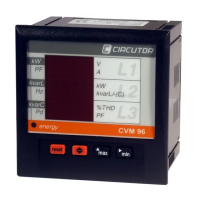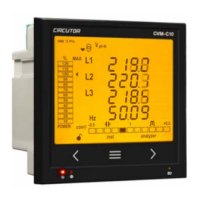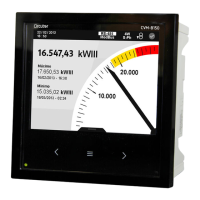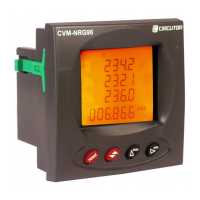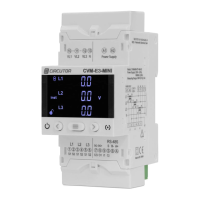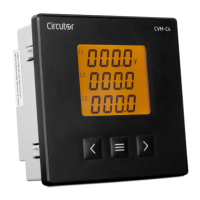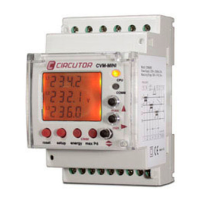Table 15: Selecting the tariff according to the inputs�
I1 I2
Tariff
Tariff selection Tariff selection
0 0 Tariff 1
0 1 Tariff 2
1 0 Tariff 3
4.7.- OUTPUTS
The device features:
Two relay digital outputs (terminals 16, 17, 18 and 19 in Figure 1) programmable as
alarms, see “5.7.16.-RELAY DIGITAL OUTPUTS.”
Two transistor digital outputs, optoisolated NPNs (terminals 10, 11 and 12 in
Figure 1) programmable as an impulse output or alarms, see “5.7.17.- TRANSISTOR DIG-
ITAL OUTPUTS.”
4.8.- DATALOGGER MODULE: DATA STORAGE
The CVM-A allows data to be stored under the embedded PowerStudio platform integrated in
the device.
Stored information can be accessed with a web browser compatible with HTML5 and/or with
HTTP Requests to the integrated XML server.
Note: Refer to the “ANNEX A: XML SERVICES“ or the PowerStudio manual for more informa-
tion about the XML server.
After connecting to an Ethernet network and once an IP address has been assigned, use the
web browser of a computer in the same local network and enter the IP address in the browser’s
navigation bar. The embedded PowerStudio environment of the CVM-A can be used to display
the data in real time, as well as the data stored over time.
Refer to the PowerStudio manuals and tutorials on CIRCUTOR’s website for more information
about additional congurations, sending emails, generation of additional calculations, etc.
4�8�1�- CONNECTION TERMINALS
The device’s Ethernet connection is on terminal 20, as shown in Figure 1�
4�8�2�- LEDs
The device features 2 LEDs between the Ethernet connector, Figure 37, which indicate the sta-
tus of communications.
54
CVM-A1000 - CVM-A1500
Instruction Manual

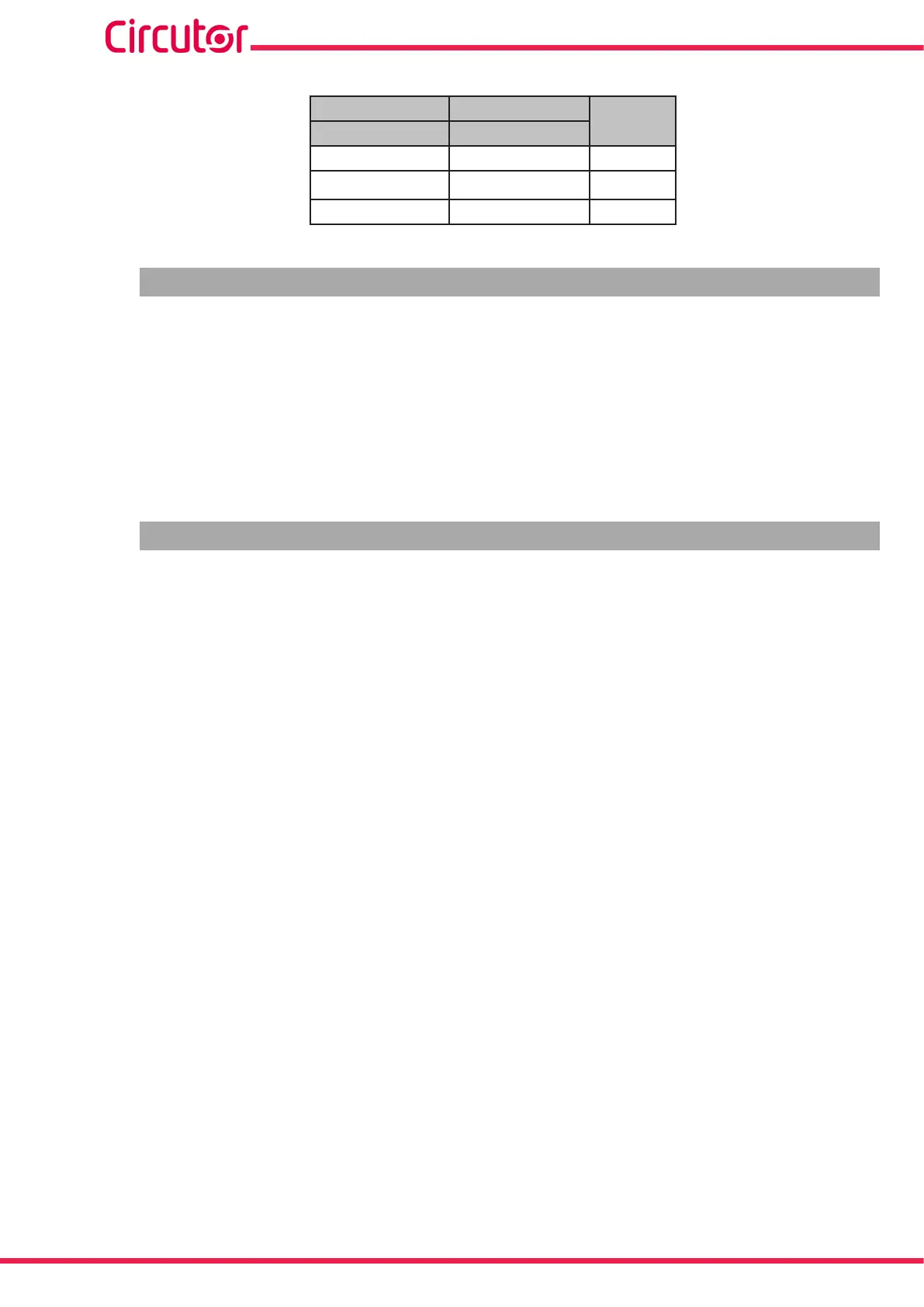